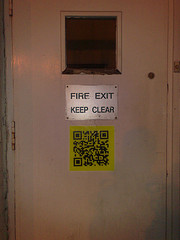These are my very rough notes on Grahame Klyne's talk on Agile Development as JISC's dev8D event in February. Grahame works with bioinformatics and the semantic web at the zoology department of Oxford University. He is interested in how people can make useful things out of semantic web technologies.
Any mistakes are mine, obviously, and any comments or corrections are welcome. (I should warn that they're still rough, even though it's taken me a month to get them online.) My notes in [square brackets] below.
He started by asking people in the room to introduce themselves, which was a nice idea as most people hadn't met.
Agile and their project
Agile seemed to be particularly appropriate for development in a research context, where the final outcomes are necessarily uncertain. [I'm particularly interested in how they managed to build Agile development into the JISC project proposal, as reflected in 'A call for agile museum projects (a lunchtime manifesto)'. Even getting agile working in a university environment seems like an impressive achievement to me, though universities tend to be more up-to-date with development models than museums.]
They had real users, and wanted to apply semantic web technologies to help them do their research.
At the start of the project, all the developers went on week-long training course on agile development, which was really important for the smooth running of the project as they all came out with a common view on how they might go forward. Everyone worked with 'how can we make this work best for us' view of agile development.
Agile – what's it about?
Agile values individuals and interactions over processes and tools. It values responding to change over following a plan – this is particularly interesting when writing proposals for funders like JISC.
From a personal perspective, the key principles became: what we do is (end) user led; spend a lot of time communicating; build on existing working system code (i.e. value code over documentation); develop incrementally. It's not in all the textbooks but they found it's important – they 'retrospect'.
User-led: you need a real user as a starting point. Not sure how to advise someone working on a project without real users [I didn't ask, but why would you be doing a project without a real users?]. It's far easier to elicit requirements from user if you have a working system.
Build and maintain trust in the team. [Important.]
Building on working code: start with something simple that works. Build in small steps – it's easy to say, but the discipline of forcing yourself to take tiny steps is quite hard. The temptation is to cram in a bit more functionality and think you'll sort it out later. When you get used to the discipline of small steps, it gets so much easier to maintain flow of development.
Minimise periods of time when you don't have working system.
Don't sacrifice quality.
Always look for easy ways of implementing what you need to do now. Don't bring in more complex solution because you think you might need it later.
Retrospection – 'the one indispensable practice of agile'? As a team, take time regularly to review and adjust.
More random points: Test-lead development is often assoc with agile development. Think of test cases as specification – it's also a useful mindset for standards development groups. Test cases are particularly useful when working with external code bases or applications – even more so than when working with your own code. [There was quite a bit of discussion about this, I think whether it made sense to you depended on your experiences commissioning or reviewing possible applications for purchase for institutional use. I can think of occasions when it would have been a very useful approach for dealing with vendor oversell – it sounds like a sensible way to test the fit of third-party applications for your situation.]
Keep refactoring separate from the addition of new functionality.
Card planning: for e.g. user stories, tasks. It's a good solution in an environment with very strong characters, it allows everyone to be confident that their input was being noted, which means they don't hijack the session to make sure their points have been heard… the team can then review and decide which are most important in next small block of work.
Outcomes: progress had been steady and continuous rather than meteoric. What seems like a slow pace at the time actually gets you quite far. It produces a sense of continuous progress.
Unexpected architectural choices – had particular view about how web interactions were going to work in the project, e.g. choice between server side or client side JavaScript – he was sceptical, but knew he could change his mind later, could follow one path and change if necessary. But actually resulted in architectural choices that would never have made upfront but which were best for the situation.
Discussion
Never refactor until you have to. Don't make stuff you *might* need, make it when you need it.

